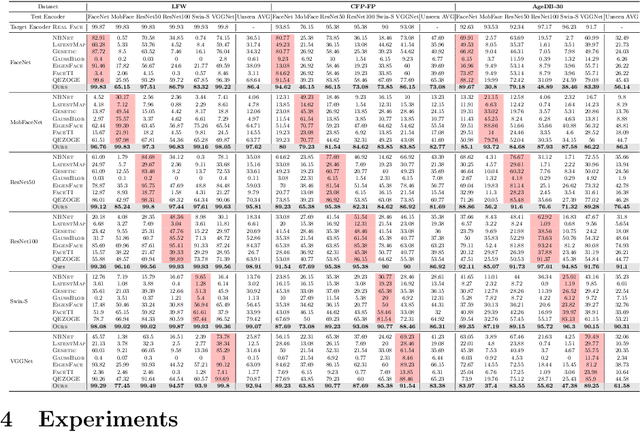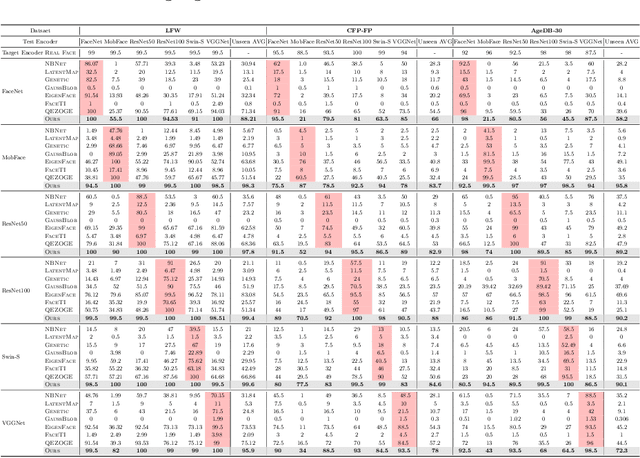Jaewoo Park
Zero-shot Multimodal Document Retrieval via Cross-modal Question Generation
Aug 23, 2025Abstract:Rapid advances in Multimodal Large Language Models (MLLMs) have expanded information retrieval beyond purely textual inputs, enabling retrieval from complex real world documents that combine text and visuals. However, most documents are private either owned by individuals or confined within corporate silos and current retrievers struggle when faced with unseen domains or languages. To address this gap, we introduce PREMIR, a simple yet effective framework that leverages the broad knowledge of an MLLM to generate cross modal pre questions (preQs) before retrieval. Unlike earlier multimodal retrievers that compare embeddings in a single vector space, PREMIR leverages preQs from multiple complementary modalities to expand the scope of matching to the token level. Experiments show that PREMIR achieves state of the art performance on out of distribution benchmarks, including closed domain and multilingual settings, outperforming strong baselines across all retrieval metrics. We confirm the contribution of each component through in depth ablation studies, and qualitative analyses of the generated preQs further highlight the model's robustness in real world settings.
Posterior Contraction for Sparse Neural Networks in Besov Spaces with Intrinsic Dimensionality
Jun 23, 2025Abstract:This work establishes that sparse Bayesian neural networks achieve optimal posterior contraction rates over anisotropic Besov spaces and their hierarchical compositions. These structures reflect the intrinsic dimensionality of the underlying function, thereby mitigating the curse of dimensionality. Our analysis shows that Bayesian neural networks equipped with either sparse or continuous shrinkage priors attain the optimal rates which are dependent on the intrinsic dimension of the true structures. Moreover, we show that these priors enable rate adaptation, allowing the posterior to contract at the optimal rate even when the smoothness level of the true function is unknown. The proposed framework accommodates a broad class of functions, including additive and multiplicative Besov functions as special cases. These results advance the theoretical foundations of Bayesian neural networks and provide rigorous justification for their practical effectiveness in high-dimensional, structured estimation problems.
RefPose: Leveraging Reference Geometric Correspondences for Accurate 6D Pose Estimation of Unseen Objects
May 16, 2025Abstract:Estimating the 6D pose of unseen objects from monocular RGB images remains a challenging problem, especially due to the lack of prior object-specific knowledge. To tackle this issue, we propose RefPose, an innovative approach to object pose estimation that leverages a reference image and geometric correspondence as guidance. RefPose first predicts an initial pose by using object templates to render the reference image and establish the geometric correspondence needed for the refinement stage. During the refinement stage, RefPose estimates the geometric correspondence of the query based on the generated references and iteratively refines the pose through a render-and-compare approach. To enhance this estimation, we introduce a correlation volume-guided attention mechanism that effectively captures correlations between the query and reference images. Unlike traditional methods that depend on pre-defined object models, RefPose dynamically adapts to new object shapes by leveraging a reference image and geometric correspondence. This results in robust performance across previously unseen objects. Extensive evaluation on the BOP benchmark datasets shows that RefPose achieves state-of-the-art results while maintaining a competitive runtime.
Explain with Visual Keypoints Like a Real Mentor! A Benchmark for Multimodal Solution Explanation
Apr 07, 2025Abstract:With the rapid advancement of mathematical reasoning capabilities in Large Language Models (LLMs), AI systems are increasingly being adopted in educational settings to support students' comprehension of problem-solving processes. However, a critical component remains underexplored in current LLM-generated explanations: visual explanation. In real-world instructional contexts, human tutors routinely employ visual aids - such as diagrams, markings, and highlights - to enhance conceptual clarity. To bridge this gap, we introduce a novel task of visual solution explanation, which requires generating explanations that incorporate newly introduced visual elements essential for understanding (e.g., auxiliary lines, annotations, or geometric constructions). To evaluate model performance on this task, we propose MathExplain, a multimodal benchmark consisting of 997 math problems annotated with visual keypoints and corresponding explanatory text that references those elements. Our empirical results show that while some closed-source models demonstrate promising capabilities on visual solution-explaining, current open-source general-purpose models perform inconsistently, particularly in identifying relevant visual components and producing coherent keypoint-based explanations. We expect that visual solution-explaining and the MathExplain dataset will catalyze further research on multimodal LLMs in education and advance their deployment as effective, explanation-oriented AI tutors. Code and data will be released publicly.
TailedCore: Few-Shot Sampling for Unsupervised Long-Tail Noisy Anomaly Detection
Apr 03, 2025Abstract:We aim to solve unsupervised anomaly detection in a practical challenging environment where the normal dataset is both contaminated with defective regions and its product class distribution is tailed but unknown. We observe that existing models suffer from tail-versus-noise trade-off where if a model is robust against pixel noise, then its performance deteriorates on tail class samples, and vice versa. To mitigate the issue, we handle the tail class and noise samples independently. To this end, we propose TailSampler, a novel class size predictor that estimates the class cardinality of samples based on a symmetric assumption on the class-wise distribution of embedding similarities. TailSampler can be utilized to sample the tail class samples exclusively, allowing to handle them separately. Based on these facets, we build a memory-based anomaly detection model TailedCore, whose memory both well captures tail class information and is noise-robust. We extensively validate the effectiveness of TailedCore on the unsupervised long-tail noisy anomaly detection setting, and show that TailedCore outperforms the state-of-the-art in most settings.
GuideDog: A Real-World Egocentric Multimodal Dataset for Blind and Low-Vision Accessibility-Aware Guidance
Mar 17, 2025Abstract:Mobility remains a significant challenge for the 2.2 billion people worldwide affected by blindness and low vision (BLV), with 7% of visually impaired individuals experiencing falls at least once a month. While recent advances in Multimodal Large Language Models (MLLMs) offer promising opportunities for BLV assistance, their development has been hindered by limited datasets. This limitation stems from the fact that BLV-aware annotation requires specialized domain knowledge and intensive labor. To address this gap, we introduce GuideDog, a novel accessibility-aware guide dataset containing 22K image-description pairs (including 2K human-annotated pairs) that capture diverse real-world scenes from a pedestrian's viewpoint. Our approach shifts the annotation burden from generation to verification through a collaborative human-AI framework grounded in established accessibility standards, significantly improving efficiency while maintaining high-quality annotations. We also develop GuideDogQA, a subset of 818 samples featuring multiple-choice questions designed to evaluate fine-grained visual perception capabilities, specifically object recognition and relative depth perception. Our experimental results highlight the importance of accurate spatial understanding for effective BLV guidance. GuideDog and GuideDogQA will advance research in MLLM-based assistive technologies for BLV individuals while contributing to broader applications in understanding egocentric scenes for robotics and augmented reality. The code and dataset will be publicly available.
Teaching Metric Distance to Autoregressive Multimodal Foundational Models
Mar 04, 2025Abstract:As large language models expand beyond natural language to domains such as mathematics, multimodal understanding, and embodied agents, tokens increasingly reflect metric relationships rather than purely linguistic meaning. We introduce DIST2Loss, a distance-aware framework designed to train autoregressive discrete models by leveraging predefined distance relationships among output tokens. At its core, DIST2Loss transforms continuous exponential family distributions derived from inherent distance metrics into discrete, categorical optimization targets compatible with the models' architectures. This approach enables the models to learn and preserve meaningful distance relationships during token generation while maintaining compatibility with existing architectures. Empirical evaluations show consistent performance gains in diverse multimodal applications, including visual grounding, robotic manipulation, generative reward modeling, and image generation using vector-quantized features. These improvements are pronounced in cases of limited training data, highlighting DIST2Loss's effectiveness in resource-constrained settings.
Revisiting DDIM Inversion for Controlling Defect Generation by Disentangling the Background
Nov 25, 2024Abstract:In anomaly detection, the scarcity of anomalous data compared to normal data poses a challenge in effectively utilizing deep neural network representations to identify anomalous features. From a data-centric perspective, generative models can solve this data imbalance issue by synthesizing anomaly datasets. Although previous research tried to enhance the controllability and quality of generating defects, they do not consider the relation between background and defect. Since the defect depends on the object's background (i.e., the normal part of an object), training only the defect area cannot utilize the background information, and even generation can be biased depending on the mask information. In addition, controlling logical anomalies should consider the dependency between background and defect areas (e.g., orange colored defect on a orange juice bottle). In this paper, our paper proposes modeling a relationship between the background and defect, where background affects denoising defects; however, the reverse is not. We introduce the regularizing term to disentangle denoising background from defects. From the disentanglement loss, we rethink defect generation with DDIM Inversion, where we generate the defect on the target normal image. Additionally, we theoretically prove that our methodology can generate a defect on the target normal image with an invariant background. We demonstrate our synthetic data is realistic and effective in several experiments.
A Stein Gradient Descent Approach for Doubly Intractable Distributions
Oct 28, 2024Abstract:Bayesian inference for doubly intractable distributions is challenging because they include intractable terms, which are functions of parameters of interest. Although several alternatives have been developed for such models, they are computationally intensive due to repeated auxiliary variable simulations. We propose a novel Monte Carlo Stein variational gradient descent (MC-SVGD) approach for inference for doubly intractable distributions. Through an efficient gradient approximation, our MC-SVGD approach rapidly transforms an arbitrary reference distribution to approximate the posterior distribution of interest, without necessitating any predefined variational distribution class for the posterior. Such a transport map is obtained by minimizing Kullback-Leibler divergence between the transformed and posterior distributions in a reproducing kernel Hilbert space (RKHS). We also investigate the convergence rate of the proposed method. We illustrate the application of the method to challenging examples, including a Potts model, an exponential random graph model, and a Conway--Maxwell--Poisson regression model. The proposed method achieves substantial computational gains over existing algorithms, while providing comparable inferential performance for the posterior distributions.
Face Reconstruction Transfer Attack as Out-of-Distribution Generalization
Jul 02, 2024



Abstract:Understanding the vulnerability of face recognition systems to malicious attacks is of critical importance. Previous works have focused on reconstructing face images that can penetrate a targeted verification system. Even in the white-box scenario, however, naively reconstructed images misrepresent the identity information, hence the attacks are easily neutralized once the face system is updated or changed. In this paper, we aim to reconstruct face images which are capable of transferring face attacks on unseen encoders. We term this problem as Face Reconstruction Transfer Attack (FRTA) and show that it can be formulated as an out-of-distribution (OOD) generalization problem. Inspired by its OOD nature, we propose to solve FRTA by Averaged Latent Search and Unsupervised Validation with pseudo target (ALSUV). To strengthen the reconstruction attack on OOD unseen encoders, ALSUV reconstructs the face by searching the latent of amortized generator StyleGAN2 through multiple latent optimization, latent optimization trajectory averaging, and unsupervised validation with a pseudo target. We demonstrate the efficacy and generalization of our method on widely used face datasets, accompanying it with extensive ablation studies and visually, qualitatively, and quantitatively analyses. The source code will be released.
 Add to Chrome
Add to Chrome Add to Firefox
Add to Firefox Add to Edge
Add to Edge